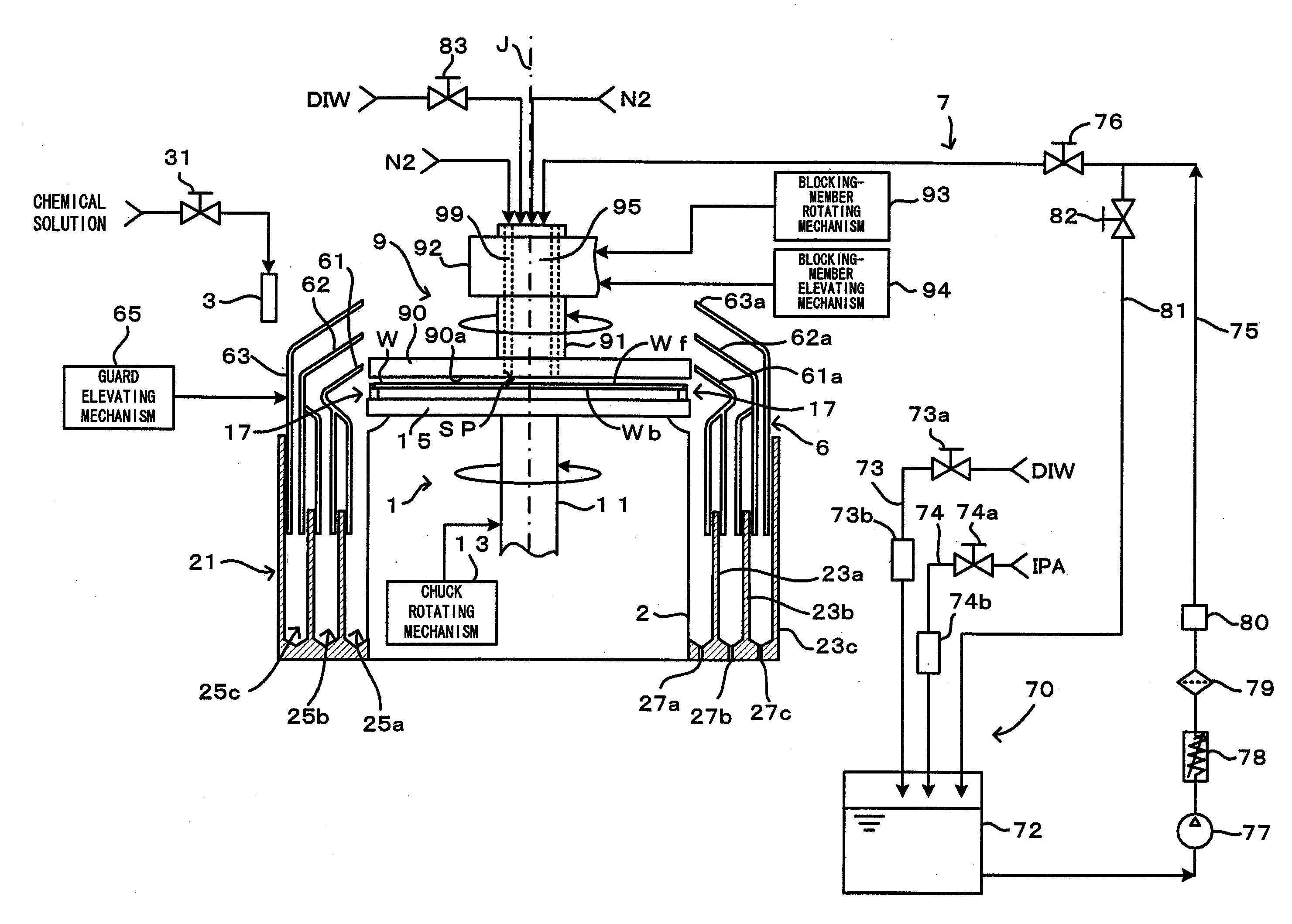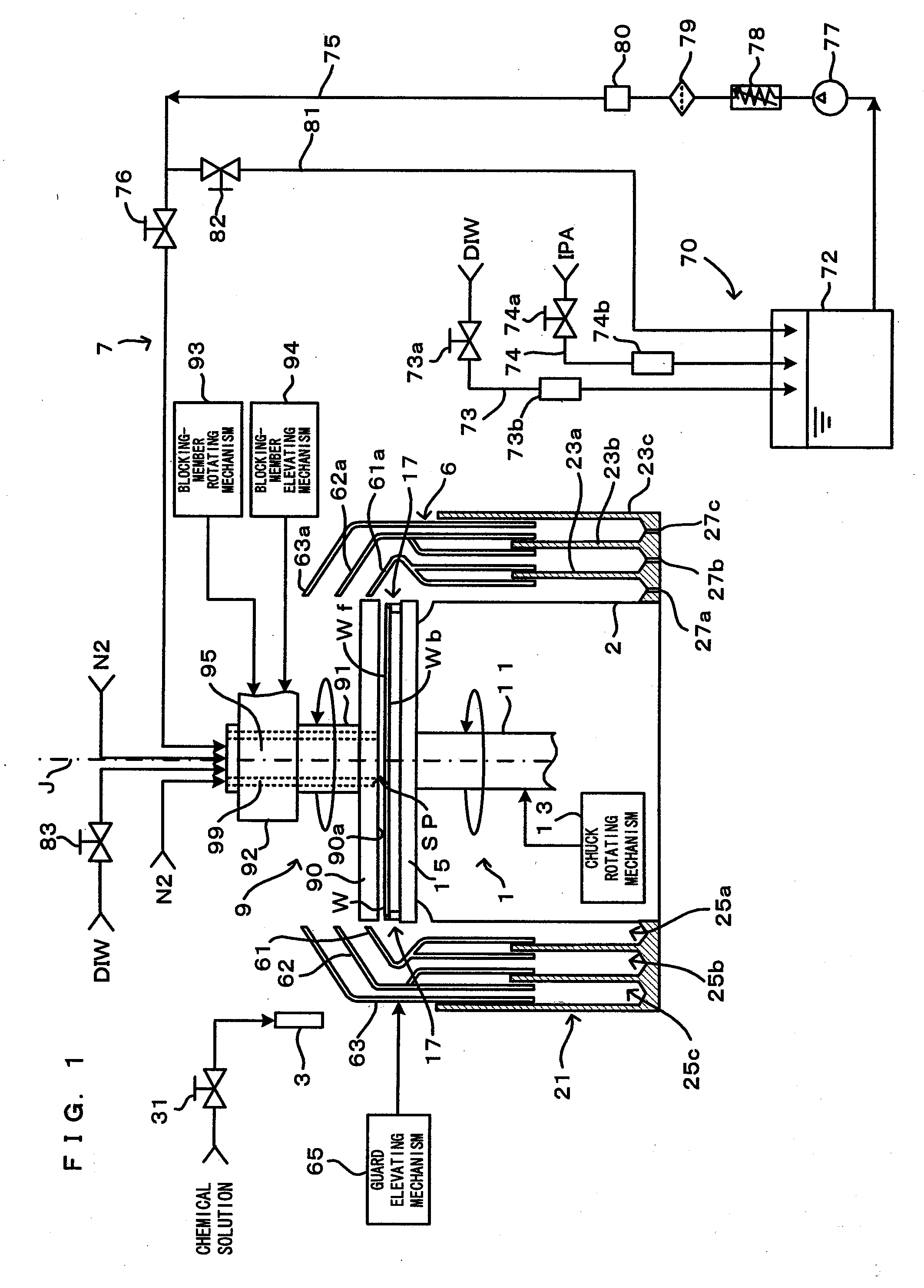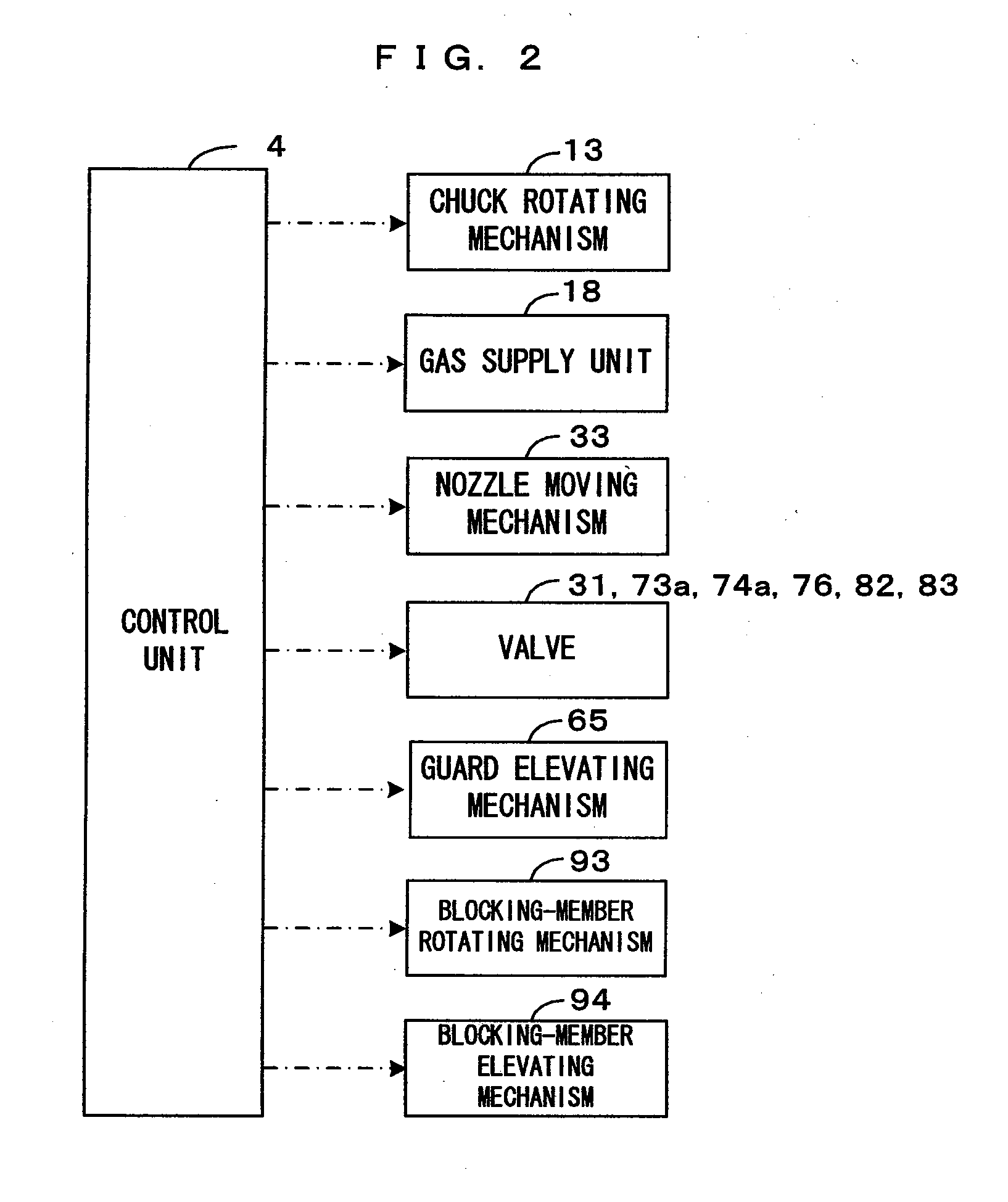Substrate processing apparatus and substrate processing method
a substrate and processing apparatus technology, applied in the direction of chemistry apparatus and processes, cleaning processes and apparatus, cleaning using liquids, etc., can solve the problems of film or generating watermarks on the substrate surface, and achieve the effect of promoting liquid agitation and low surface tension
- Summary
- Abstract
- Description
- Claims
- Application Information
AI Technical Summary
Benefits of technology
Problems solved by technology
Method used
Image
Examples
first embodiment
[0025]FIG. 1 is a diagram showing a first embodiment of a substrate processing apparatus according to this invention, and FIG. 2 is a block diagram showing a main control construction of the substrate processing apparatus of FIG. 1. This substrate processing apparatus is a substrate processing apparatus of a single wafer type used for cleaning processing to remove undesired substance adhering to a surface Wf of a substrate W such as a semiconductor wafer. More specifically, after applying chemical processing using a chemical solution such as a hydrofluoric acid and rinsing processing using a rinsing liquid such as pure water or DIW (deionized water) to the substrate surface Wf, this apparatus dries the substrate surface Wf wet with the rinsing liquid. In this embodiment, the substrate surface Wf means a pattern-formed surface on which a device pattern made of poly-Si or the like is formed.
[0026]This substrate processing apparatus includes a spin chuck 1, a chemical solution discharg...
second embodiment
[0075]FIG. 10 is a timing chart showing the operation of a substrate processing apparatus according to a second embodiment of the invention, and FIGS. 11A to 11C are diagrams schematically showing the operation of the substrate processing apparatus according to the second embodiment of the invention. The substrate processing apparatus according to the second embodiment largely differs from the first embodiment in that a major part of the rinsing liquid adhering to the substrate surface Wf is blown off to be removed with a part thereof left after the rinsing step and before the replacing step. The other construction and operation are not described here since being similar to those of the first embodiment.
[0076]In this embodiment, upon finishing rinsing processing, the control unit 4 sets the rotating speed of the substrate W to 300 to 500 rpm. Although a relatively large amount of the rinsing liquid (DIW) adheres to the substrate surface Wf after rinsing processing (FIG. 11A), a majo...
third embodiment
[0079]FIG. 12 is a diagram showing a third embodiment of the substrate processing apparatus according to the invention. The substrate processing apparatus according to the third embodiment largely differs from the first and second embodiments in that the plate-like member90 of the blocking member 9 is rotated as the substrate W rotates in the first and second embodiments, whereas the blocking member is arranged away from the substrate surface Wf while being held stationary without being rotated and facing the substrate surface Wf in the third embodiment. The other construction and operation are not described here since being similar to those of the first and second embodiments.
[0080]In this embodiment, a blocking member 100 is structured to move upward and downward between a facing position set in the vicinity of the surface Wf of the substrate W held by a spin chuck and a separated position sufficiently distanced upward from the substrate surface Wf, and is moved upward and downwar...
PUM
 Login to View More
Login to View More Abstract
Description
Claims
Application Information
 Login to View More
Login to View More - R&D
- Intellectual Property
- Life Sciences
- Materials
- Tech Scout
- Unparalleled Data Quality
- Higher Quality Content
- 60% Fewer Hallucinations
Browse by: Latest US Patents, China's latest patents, Technical Efficacy Thesaurus, Application Domain, Technology Topic, Popular Technical Reports.
© 2025 PatSnap. All rights reserved.Legal|Privacy policy|Modern Slavery Act Transparency Statement|Sitemap|About US| Contact US: help@patsnap.com



